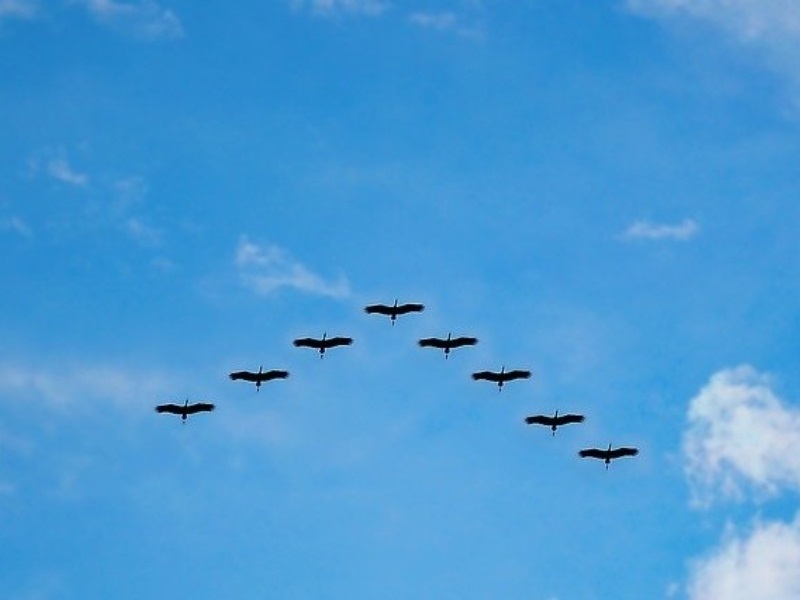The migration of the cranes: where in France to catch a glimpse!

Witnessing the migration of the cranes is one of the joys of living in France. Each year you can see them gliding through the sky in huge and spectacular formations.
Their flight groups average between 40-250 birds.
A sight not to be missed!
What is a crane and why are they special?
- One of the largest birds in Europe, with a wingspan of 2 meters
- Fluffy tails – which are actually their wings folded back
- Very social during migration season (although very territorial when nesting!)
- During migration they fly by day and night, at altitudes of between 200-1000m
Where do they come from and where are they going?
- They spend the summer breeding in Russia, Norway, Sweden, Finland and the Baltic countries.
- The young start flying around 2 months old and in late summer they set off south in search of more hospitable places to spend the winter.
- The majority of cranes that migrate through France are headed for the Extremadura region of Spain (however many don’t make it that far and end up wintering in France).
When does the migration take place?
- Autumn migration, when they head down south for winter, takes place between October and December. Some early birds start heading down in September.
- Spring migration, when they head back north for summer, starts in January with peak migration over France in March. In a hurry to return many groups of birds will cross France in a single day!
Where can I see the migration in France?
- During the migration season crane flights can be seen across large parts of the Lorraine, Champagne-Ardenne, Burgundy, Center, Limousin, Aquitaine and Auvergne.
- If you want to see the birds up close, you’re best off visiting one of their popular stopping points in France where they gather in their thousands. Some of the best are the Lac du Der Chantecoq, Champagne-Ardenne and the Landes de Gasgoine, Aquitaine (in particular Arjuzanx, Captieux, Lac de Pudarrieux).
- During the season there are also many birdwatching events that take place. Eurobirdwatch and Ligue pour la Protection des Oiseaux often list local events on their websites.





